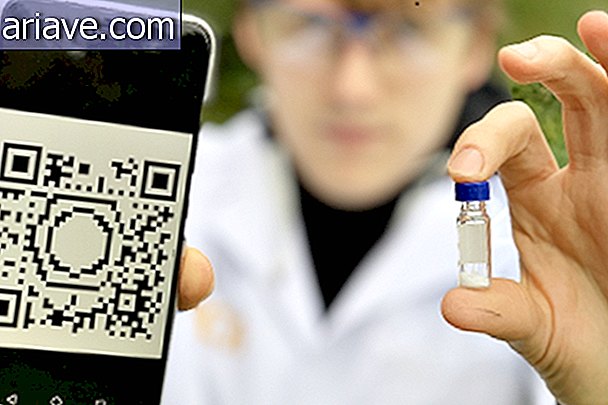Jupiter's moon could harbor life forms in its icy oceans
As you know, there are many astronomers dedicated to the mission of finding life forms on other planets - after all, the idea that we are unique in the universe is so ... depressing! We don't even have to go that far to find promising candidates, and we at Mega Curious have already published stories about one in particular: Europe, one of Jupiter's 67 moons.
The Jupiterian satellite can be tiny - it's slightly smaller than our moon - and icy. However, there is strong evidence that there is a huge salty ocean beneath the thick layer of ice that covers its surface, the volume of which could be twice as large as all the water on Earth. This, by the way, is one of the indispensable ingredients for the existence of life (as we know it).
New discoveries
Now, a recent study conducted by NASA has revealed that the chemical composition of the - possible - ocean that exists in Europe may be very similar to what we have here on our planet. The space agency scientists used the same methods used to evaluate terrestrial oceans and compared the Jupiterian moon's potential to produce oxygen and hydrogen with Earth's.

The researchers believe that Jupiter's satellite has a rocky core, and the simulations allowed them to estimate how much hydrogen and oxygen could be released thanks to the reaction of water to the rock formations that lie beneath the ocean. Scientists still intend to evaluate how the liquid interacts with possible cracks that form on the rocky surface.
The reason is that when a new crack forms here on Earth, the newly exposed rock comes into contact with water, forming minerals and releasing hydrogen - and researchers want to find out if the same phenomenon happens in Europe. According to NASA, the intention is to determine if the satellite has the necessary elements and chemical energy in exact proportion to allow biological processes to take place there.
The space agency team is also eyeing the satellite's icy surface to find evidence demonstrating the possibility that life forms will survive under those conditions. And in that sense, scientists have also made significant advances.
Advances
According to NASA, as the atmosphere on the satellite is scarcely abundant, Europe does not have much protection against cosmic rays reaching its surface. For this radiation possibly causes chemical reactions in the ice that would result in the release of oxidants - which are also necessary ingredients for life.

It turns out that, according to astronomers, Europe's icy surface is constantly renewed through the tectonic activity of ice, meaning that there is a possibility that oxidants will eventually dissolve in the ocean beneath the surface and once in water they can react with other chemical elements.
The simulations pointed out that because of this, there may be ten times more oxygen than hydrogen on the satellite - a rate similar to Earth's. The next step will be to determine the cycle of other elements important for life, such as phosphorus, carbon, nitrogen and sulfur, for example.
Anyway, what has been discovered so far only reinforces the theory that Europe really is one of the most promising places in the Solar System so far to find alien life forms.











